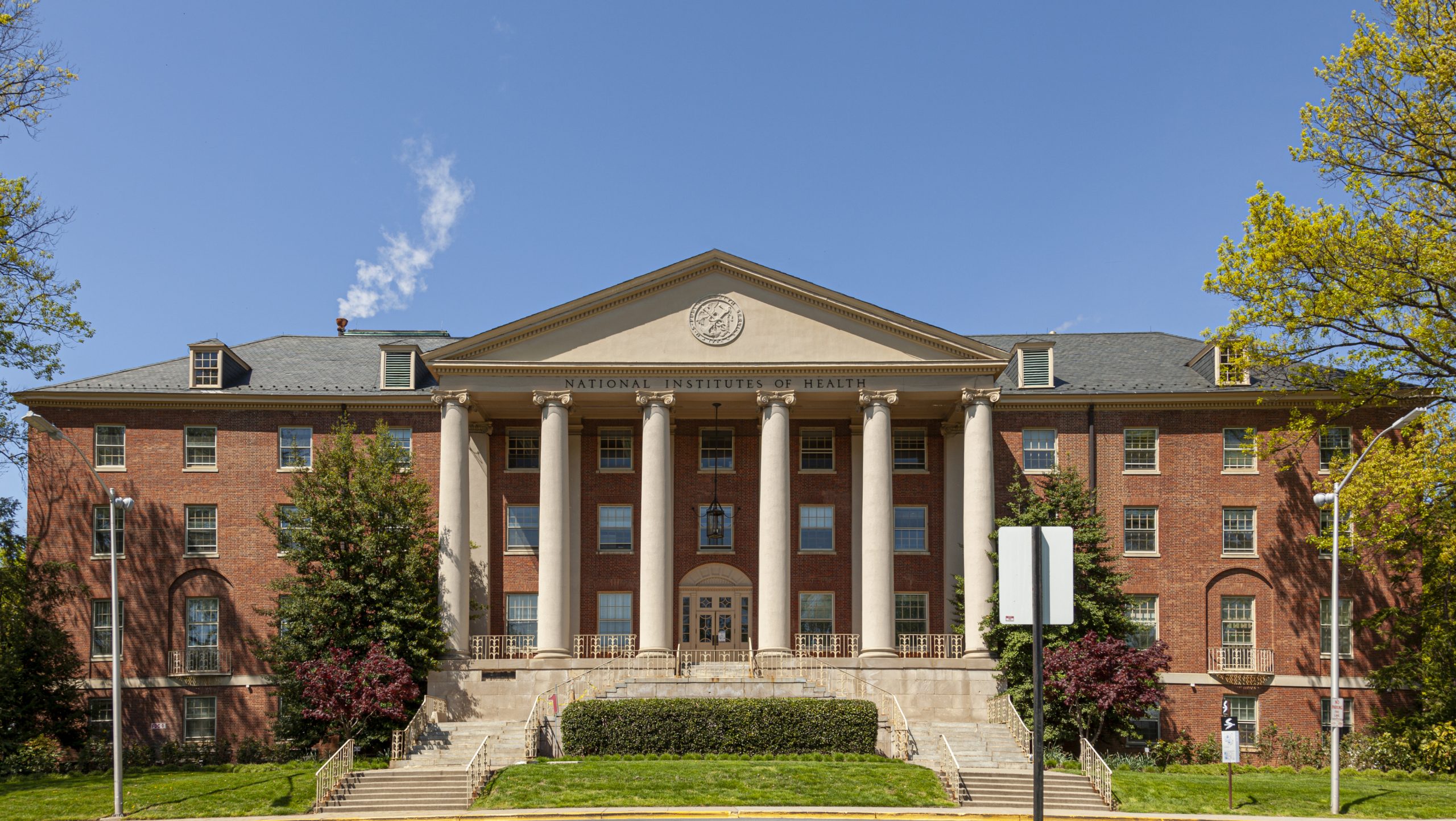NIH announced on February 7, 2025 that effective Monday, February 10, 2025, “In accordance with 45 CFR 75 and its accompanying appendices, this Guidance implements and makes publicly available NIH’s updated policy deviating from the negotiated indirect cost rate for new grant awards and existing grant awards, effective as of the date of this Guidance’s issuance. Pursuant to this Supplemental Guidance, there will be a standard indirect rate of 15% across all NIH grants for indirect costs in lieu of a separately negotiated rate for indirect costs in every grant.”
Read Notice Number NOT-OD-25-068 for more information.

Bethesda Campus of the National Institutes of Health, main historical building Building 1 (Image ID 216975040 | Nih © Grandbrothers | Dreamstime.com Editorial Stock Photo)
Notice Number: NOT-OD-25-068 includes the following:
“For any new grant issued, and for all existing grants to IHEs retroactive to the date of issuance of this Supplemental Guidance, award recipients are subject to a 15 percent indirect cost rate. This rate will allow grant recipients a reasonable and realistic recovery of indirect costs while helping NIH ensure that grant funds are, to the maximum extent possible, spent on furthering its mission. This policy shall be applied to all current grants for go forward expenses from February 10, 2025 forward as well as for all new grants issued. We will not be applying this cap retroactively back to the initial date of issuance of current grants to IHEs, although we believe we would have the authority to do so under 45 CFR 75.414(c).”
According to NIH, an Institution of Higher Education (IHE) is defined at 20 U.S.C. 1001.
§1001. General definition of institution of higher education
(a) Institution of higher education
For purposes of this chapter, other than subchapter IV, the term “institution of higher education” means an educational institution in any State that-
(1) admits as regular students only persons having a certificate of graduation from a school providing secondary education, or the recognized equivalent of such a certificate, or persons who meet the requirements of section 1091(d) of this title;
(2) is legally authorized within such State to provide a program of education beyond secondary education;
(3) provides an educational program for which the institution awards a bachelor’s degree or provides not less than a 2-year program that is acceptable for full credit toward such a degree, or awards a degree that is acceptable for admission to a graduate or professional degree program, subject to review and approval by the Secretary;
(4) is a public or other nonprofit institution; and
(5) is accredited by a nationally recognized accrediting agency or association, or if not so accredited, is an institution that has been granted preaccreditation status by such an agency or association that has been recognized by the Secretary for the granting of preaccreditation status, and the Secretary has determined that there is satisfactory assurance that the institution will meet the accreditation standards of such an agency or association within a reasonable time.
(b) Additional institutions included
For purposes of this chapter, other than subchapter IV, the term “institution of higher education” also includes-
(1) any school that provides not less than a 1-year program of training to prepare students for gainful employment in a recognized occupation and that meets the provision of paragraphs (1), (2), (4), and (5) of subsection (a); and
(2) a public or nonprofit private educational institution in any State that, in lieu of the requirement in subsection (a)(1), admits as regular students individuals-
(A) who are beyond the age of compulsory school attendance in the State in which the institution is located; or
(B) who will be dually or concurrently enrolled in the institution and a secondary school.
Read More: 20 USC 1001: General definition of institution of higher education
